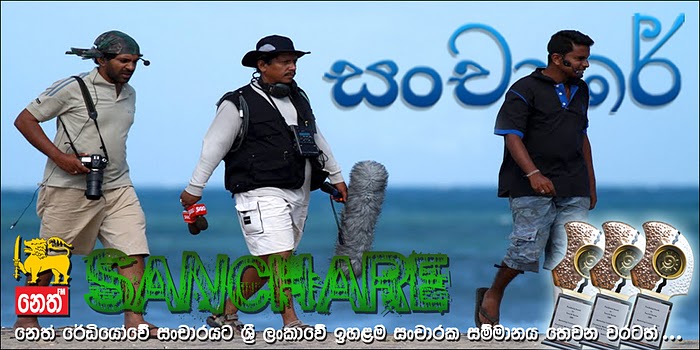Ruhunu, Maya and Pihiti comprised the ancient Tri-Sinhale. The Ruhunu Rata or Rohana Deshaya was an independent kingdom spread over about three-fourth of the country. The Uva province which belonged traditionally to Rohana, was declared in 186 to be a separate administrative unit.
When studying the religious, cultural and social history of Sri Lanka, the Uva province receives a special place. At times, the history of Uva extend beyond the Anuradhapura era, and pre-Vijayan history.
According to the Mahavamsa, by the first century A.D, Uva had been known as Huawa (Mahawamsa, Chapter 60). There is evidence to suggest that the present name, Uva had been coined in the 17 th century.
The boundaries of Uva.
The Maha Disava of Uva is as large as 3277 1/8 square miles. About 32 square miles are reserved for water reservoirs. While one boundary is the Mahaveli river, on the other side, the Walwe river, Galoya, Kubukkanoya, Manika river, Kiridi oya, Walawe river and the mountains they originate from, bring great beauty to the Uva province.
The boundaries of Uva according to a folk-song are,
From the southern and Eastern sides,
Marked by the Sripada
And the Walawe river
The bounderis of Uva were marked
Kistorical Yudaganawa.
The Historical Yudaganawa cheithya situated in the Monaragala District, is of great historical value.
The Yudaganawa temple is located about 2km from the Buttala town, on the Monaragala-Wellawaya road. Surrounding the temple are the Manik river on the East, the Puhulgala Mountai range on the North, the Yudagana river and a paddy field on the west, and Buthgal or the Buttala city on the South.
The largest templeever built in Sri Lanka is the Yudagana temple and is 1038 Square feet in circumference.
There are many legends regarding the Yudagana temple. One of them is that King Dutugemunu built the temple to ward off the sins of war with his brother Saddhathissa. The opinion of Prof. Senerath Paranawithana is that the temple is the ancient Cheeragama or Keeragama which was built for the demise of king Parakuba’s (1153-1186).
History bears evidence that the Yudaganawa temple was built in the 2 nd Century A.D. by King Mahanaga. It is believed that the king had built a thousand temples in the area. According to the Mahawamsa, the Dutugemunu-Saddhathissa war took place here.
The Maligawila Buddha Statue.
The Maligawila temple had been known in the past as Ariyakara. The villagers believe that the name was changed to Maligawila on account of the great palace and lakes in the area. The Maligawila temple is spread on 250 acres of land.
The history of Maligawila runs back to the 7 th century and 8 th century A.D. Historically, the statue here had been built by King Dappula.
There are many theories about the height of the Maligawila statue. It is 54 feet and 110 tons in size. There is evidence that the statue had been made in another place, and transported here. This is the only temple that has been built without any supports, and is an important Thereada Buddhist statue
Dambgoda Buddha Statue.
When travelling about a kilometer on the road near the Maligawila statue, the Dabegoda Bodhisatva statue is seen. This area was known as Kana grama in the past, referring to the healing of eye diseases.
The dabegoda Statue is an Apa Loketheesvara statue. This statue, with Mahayana influence, shows evidence of a seven storied building built around it. The two eyes of the statue depict the sun and moon. According to folklore, gems were placed in the eyes in the past.
This area was known as Dewala kanda in the past, and had been dilapidated for some time, and reconstructed in the 1990’s.
Dematamal Viharaya
| From butthala |
The Dematamal Vihara which is situated in the Okkampitiya Grama Sewa Wasama of the Buddata Divisional Secretatriat of the Monaragala district, is a Buddhist place of worship with great historical importance. The Dematamal Viara is recorded as the first Panchawasa Vihara in the country, ( containing Cheiththiya, Pilima Geya, Seemawa shala etc…)
According to the story, rhe Dematamal Vihara had provided protection to prince Saddhatissa. It is a famous fact that the two brothers were against each other. The prince Tissa who lost the war had hid at the temple. The priests had tried to secretly transport the prince out of the temple. Prince Gemunu having seen this had said, “Tissa, Don’t do that!” Therefore, it is thought that Dutumal became Dematamal.
It is reasonable to say that the Dematamal Vihara is a special Vihara in the country, since a Upa Pala decorated the kotha, similar to the Shanthi Stupa system of India. This is the only cheiththiya to have a Upa Pala. The Upa Gala is 18 feet in height. A rare guardstone can also be seen.
Also, after turning at the Kubukkana junction and travelling about 6 km, turning to the right from Okampitiya, this temple can be reached.
Yatiallathota.
This Vihara is situated far from the Buttala city at Palawaththa.
The history of this Vihara begins with king Mahanaga. When the queen had felt the need to deliver her child at Mannaram diya, she had said that the child should be caught. Thus, the place became Yatiallathota.
Later on, a palace, Bisokotuwa and Cheiththiya were built in the area. Another folk-tale is that the water had been brought there from the Yudaganawa tank. According to inscriptions, King Nissankamalla had renovated the vihara. The historical Kutumbala Vihara is situated nearby.










No comments:
Post a Comment